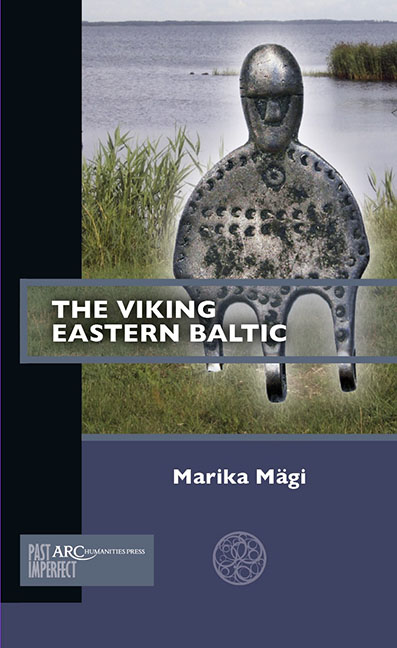Book contents
- Frontmatter
- Contents
- List of Illustrations
- Introduction
- Chapter 1 Different Cultures, Different Modes of Communication
- Chapter 2 Eastbound Routes Gain Momentum
- Chapter 3 Baltic Sea Warriors
- Chapter 4 The High-Point of Scandinavian Eastward Activity
- Chapter 5 End of the Viking Age
- Conclusion
- Further Reading
Chapter 1 - Different Cultures, Different Modes of Communication
Published online by Cambridge University Press: 20 November 2020
- Frontmatter
- Contents
- List of Illustrations
- Introduction
- Chapter 1 Different Cultures, Different Modes of Communication
- Chapter 2 Eastbound Routes Gain Momentum
- Chapter 3 Baltic Sea Warriors
- Chapter 4 The High-Point of Scandinavian Eastward Activity
- Chapter 5 End of the Viking Age
- Conclusion
- Further Reading
Summary
Archaeologists in the Eastern Baltic recognize a great diversity of archaeological cultures present during the Iron Age. Cultural and social differences play an important role in understanding Viking Age maritime communication. It would, however, take up too much space to present a comprehensive overview of current knowledge in this field, so let us therefore highlight particular characteristic phenomena that define the division of the Viking-Age Eastern Baltic into two distinct worlds: that of the Baltic Finns, and that of the Balts.
Ethnic Balts in the Southern Half of the Eastern Baltic
Written sources reveal that the ethnic Balts fell into several subgroups clearly distinguishable by archaeological material. Some of these groups represented inland people who shall be described here only fleetingly. Coastal areas along the Baltic were home to the Couronians who merited frequent mention in some Nordic sources, whilst being virtually overlooked in others. It is mostly Danish and German sources where we hear talk of inhabitants of Samland or Semland, in all probability ethnic Balts populating land in what later became Prussia, partly what is the present-day Kaliningrad region of the Russian Federation and partly in northeastern Poland today. Sure enough, the German name for the Sambia Peninsula in the Kaliningrad region is Samland.
During the Viking Age, the areas inhabited by ethnic Balts were generally characterized by a distinctive, rich, regionally diverse ethnic culture. Scandinavian influence was weak or non-existent, even though it was precisely here, Samland and Couronia, where the only Eastern Baltic Scandinavian colonies of Grobiņa and Kaup, respectively, were formed. It seems, however, that the influence of western colonists did not extend much beyond these colonies.
In nearly all regions inhabited by ethnic Balts, archaeologists have found extensive burial grounds with multiple interments. Most of these burials are accompanied by grave goods. The Balts’ material culture has been particularly well analysed in relation to areas dominated by inhumation graves containing well-preserved metal artefacts. All these areas are characterized by a multiplicity of hill-forts often surrounded by large settlements. These hill-forts served as political hubs, some of them possibly linked with trade routes. Many of the hill-forts may have functioned as cult centres, especially where two or more of them stood in close proximity to one another.
- Type
- Chapter
- Information
- The Viking Eastern Baltic , pp. 7 - 26Publisher: Amsterdam University PressPrint publication year: 2019



